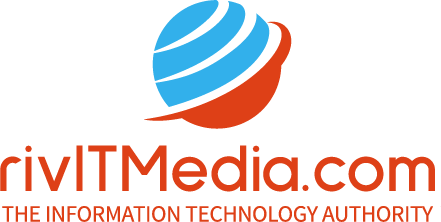When attackers look for a way into a company’s digital infrastructure, they often go straight for the heart: Active Directory (AD). As the backbone of identity and access management for many organizations, Active Directory is both indispensable and highly targeted. A breach here can provide the keys to the kingdom, giving adversaries access to credentials, critical systems, and sensitive data. For businesses, particularly small and mid-sized enterprises (SMEs) with limited IT resources, hardening AD is not just an IT task—it’s a business imperative.
Protect Your Business’ Cybersecurity Now!
Protect your business from evolving cyber threats with our tailored cybersecurity solutions designed for companies of all sizes. From malware and phishing to ransomware protection, our multi-license packages ensure comprehensive security across all devices, keeping your sensitive data safe and your operations running smoothly. With advanced features like real-time threat monitoring, endpoint security, and secure data encryption, you can focus on growth while we handle your digital protection. **Request a free quote today** for affordable, scalable solutions and ensure your business stays secure and compliant. Don’t wait—get protected before threats strike!
Understanding the Stakes
Active Directory controls how users log in, what resources they can access, and what permissions they have. It is deeply integrated into most enterprise IT environments. If compromised, attackers can impersonate users, escalate privileges, and move laterally across systems. The consequences can range from data theft to total network shutdown.
This makes Active Directory hardening one of the most critical security measures a business can implement.
Core Principles of Active Directory Hardening
Least Privilege
One of the most important principles in AD hardening is enforcing least privilege. This means users, systems, and services should only have the access they absolutely need—nothing more. Over time, permissions can accumulate, creating what security professionals call “privilege creep.”
Regular reviews of user permissions and group memberships are essential. Unused accounts should be deactivated or removed, and access rights should be tightened to align with current job functions.
Tiered Administration
Segmenting your AD environment into security tiers can dramatically reduce risk. For example:
- Tier 0: Domain controllers, AD infrastructure, and highest-privilege accounts
- Tier 1: Servers and services
- Tier 2: End-user devices and general accounts
Administrators should never use high-privilege accounts on lower-tier systems. This prevents attackers from capturing credentials through compromised workstations or browsers.
Secure Administrative Workstations
Privileged users should use hardened workstations, known as Privileged Access Workstations (PAWs), exclusively for administration. These systems should:
- Be isolated from internet access
- Run minimal software
- Be tightly monitored and audited
PAWs help prevent credential theft from phishing or malware infections on everyday use devices.
Practical Steps for Hardening Active Directory
Hardening AD isn’t a one-time fix but an ongoing process. Here are key steps businesses should implement:
1. Audit Privileged Accounts
- Identify all members of Domain Admins, Enterprise Admins, and other privileged groups.
- Remove unnecessary accounts and enforce multi-factor authentication (MFA) on all privileged logins.
- Limit where these accounts can log on.
2. Strengthen Credential Security
- Use complex passphrases and enforce password rotation.
- Replace traditional service accounts with Group Managed Service Accounts (gMSAs).
- Disable NTLM authentication and enforce Kerberos where possible.
3. Harden Domain Controllers
- Physically secure domain controllers.
- Keep them patched and limit installed software.
- Restrict network access to only essential systems.
4. Secure Group Policy
- Review and restrict permissions to modify Group Policy Objects (GPOs).
- Use secure configuration baselines like those provided by the Center for Internet Security (CIS).
- Disable legacy protocols like SMBv1.
5. Monitor and Alert
- Enable advanced auditing policies for changes in group membership, authentication failures, and policy changes.
- Forward logs to a centralized SIEM for correlation and analysis.
- Monitor for unusual behaviors such as DCSync attacks or privilege escalations.
6. Manage Service Accounts Wisely
- Regularly rotate passwords.
- Restrict permissions to the bare minimum.
- Monitor for suspicious service account behavior.
Common Vulnerabilities in AD Environments
Even well-managed environments often have hidden weaknesses. Some of the most common include:
- Overuse of Domain Admin privileges
- Weak or non-expiring service account passwords
- Lack of MFA for administrators
- Unconstrained delegation and poor use of Kerberos
- Lack of segmentation between network zones
Tools That Can Help
Several free tools can help businesses assess and improve AD security:
- PingCastle and Purple Knight: Analyze your AD for vulnerabilities and misconfigurations.
- BloodHound: Maps relationships and attack paths within AD.
- Microsoft’s Security Compliance Toolkit: Offers baseline templates for AD and Windows hardening.
Business Impact: Why SMEs Can’t Afford to Ignore AD Security
Small and mid-sized businesses may believe they aren’t a target, but that’s no longer the case. Attackers often use SMEs as entry points into larger supply chains or as easy targets for ransomware campaigns. A compromise of AD can be devastating—crippling operations, exposing sensitive data, and damaging trust with customers.
Cybersecurity is often seen as a cost center, but it’s a critical investment. Hardening Active Directory should be one of the first areas businesses secure.
Preparing for the Worst: Backup and Recovery
Even with strong defenses, you must be prepared for compromise. Ensure that:
- You have recent, secure backups of your AD infrastructure
- Backup media is offline or immutable
- You regularly test recovery procedures
- You plan for account rekeying, such as changing the krbtgt account twice post-breach
Conclusion: Make AD Hardening a Priority
Active Directory hardening isn’t just for large enterprises. It’s a critical step for businesses of all sizes. By implementing these best practices, SMEs can protect themselves against ransomware, insider threats, and credential-based attacks.
Pro Tip: Don’t just stop at AD hardening. Complement your security strategy with endpoint protection. SpyHunter‘s multi-license feature is perfect for businesses, letting you protect multiple systems with one license. It’s a practical and affordable layer of protection against malware threats.
Review your AD environment today. Start with privileged account audits, enforce MFA, and plan your backup and recovery strategy. Proactive steps now can prevent catastrophic breaches later.
Protect Your Business’ Cybersecurity Now!
Protect your business from evolving cyber threats with our tailored cybersecurity solutions designed for companies of all sizes. From malware and phishing to ransomware protection, our multi-license packages ensure comprehensive security across all devices, keeping your sensitive data safe and your operations running smoothly. With advanced features like real-time threat monitoring, endpoint security, and secure data encryption, you can focus on growth while we handle your digital protection. **Request a free quote today** for affordable, scalable solutions and ensure your business stays secure and compliant. Don’t wait—get protected before threats strike!




